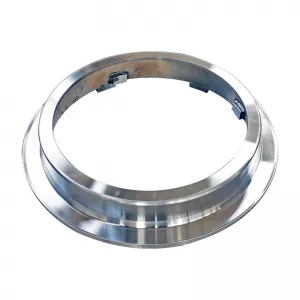12 月 . 11, 2024 09:51 Back to list
Exploring the Art and Technique of Die Casting in Modern Manufacturing
The Fascinating World of Die Casting
Die casting is an essential manufacturing process that transforms molten metal into intricately shaped components with high precision. This technique has revolutionized various industries, including automotive, aerospace, electronics, and consumer goods, thanks to its ability to produce complex geometries at scale. With advancements in technology, die casting continues to evolve, offering enhanced efficiency and sustainability.
At the heart of die casting is the use of metal molds, known as dies, which are specifically designed to create durable and accurate parts. The process begins by melting metal, typically aluminum, zinc, magnesium, or copper, at very high temperatures. Once the metal reaches a molten state, it is injected into the die cavity under high pressure. This rapid injection not only fills the mold quickly but also ensures that the molten metal takes the precise shape of the die, reducing the likelihood of defects.
The Fascinating World of Die Casting
Moreover, die casting is known for its efficiency in mass production. Once the dies are created, which can be a significant initial investment, the cost per unit decreases substantially as production scales up. Manufacturers can produce thousands of identical parts with minimal waste, making die casting a cost-effective solution for large-scale operations. Additionally, the quick cooling of the metal in the molds results in shorter cycle times, allowing for higher throughput.
die casted

Sustainability is another crucial aspect of modern die casting practices. Many manufacturers are adopting eco-friendly practices, such as recycling scrap metal and utilizing energy-efficient processes. Aluminum, for instance, can be recycled indefinitely without losing its properties, significantly reducing the environmental impact. Furthermore, the use of advanced technologies, such as robotic automation and real-time monitoring, helps optimize production processes, lowering energy consumption and enhancing overall efficiency.
Despite its numerous advantages, die casting does come with challenges. One of the most significant is the initial cost associated with die production, which can be high due to the need for durable materials and precise machining. However, for businesses looking to produce large quantities, this cost is often offset by the advantages of low per-unit costs and improved quality. Additionally, maintaining the dies requires regular inspection and maintenance to ensure their longevity, which can also add to operational expenses.
The future of die casting looks promising, with innovations in materials and technology paving the way for even more advanced applications. Developments in lightweight materials and composites, for instance, are expanding the potential of die casting beyond traditional metals. As industries continue to demand higher performance and lower weights in their components, die casting is expected to adapt and thrive.
In conclusion, die casting is a remarkable manufacturing process that offers unparalleled precision, efficiency, and sustainability. As industries evolve, the demand for high-quality, complex components will drive further advancements in die casting technology, ensuring its critical role in modern manufacturing. Whether it’s in the automotive sector or the production of electronic devices, die casting will continue to shape the future of engineering and design.
-
Centrifugally Cast Iron Water Main Pipe for Reliable Mains
NewsAug.22,2025
-
Durable Centrifugally Cast Iron Water Main Pipe
NewsAug.11,2025
-
Centrifugally Cast Iron Water Main Pipes for Reliability
NewsAug.10,2025
-
High-Quality Centrifugally Cast Iron Water Main Pipes
NewsAug.09,2025
-
Durable Cast Iron Water Main Pipe & Drainage Solutions
NewsAug.08,2025
-
Buy Cast Iron Pipe: Premium Ductile Iron & Drain Solutions
NewsAug.07,2025


